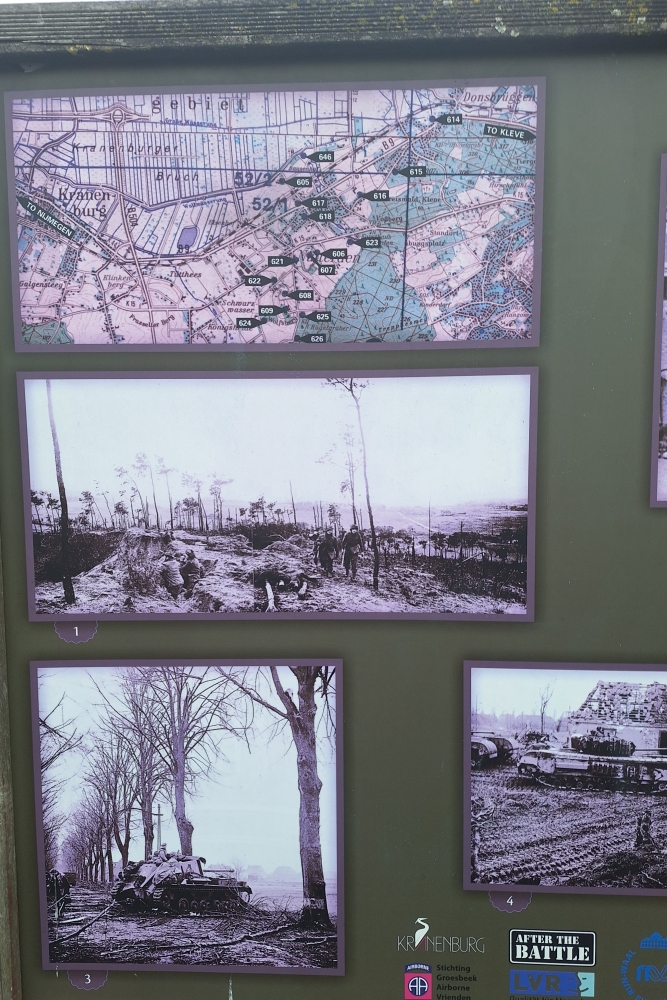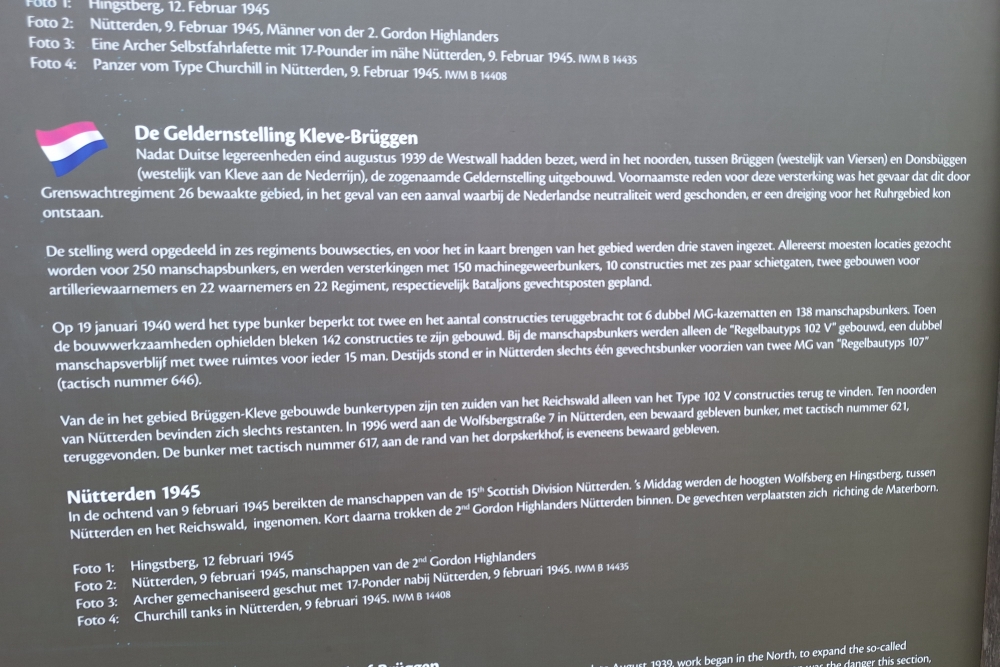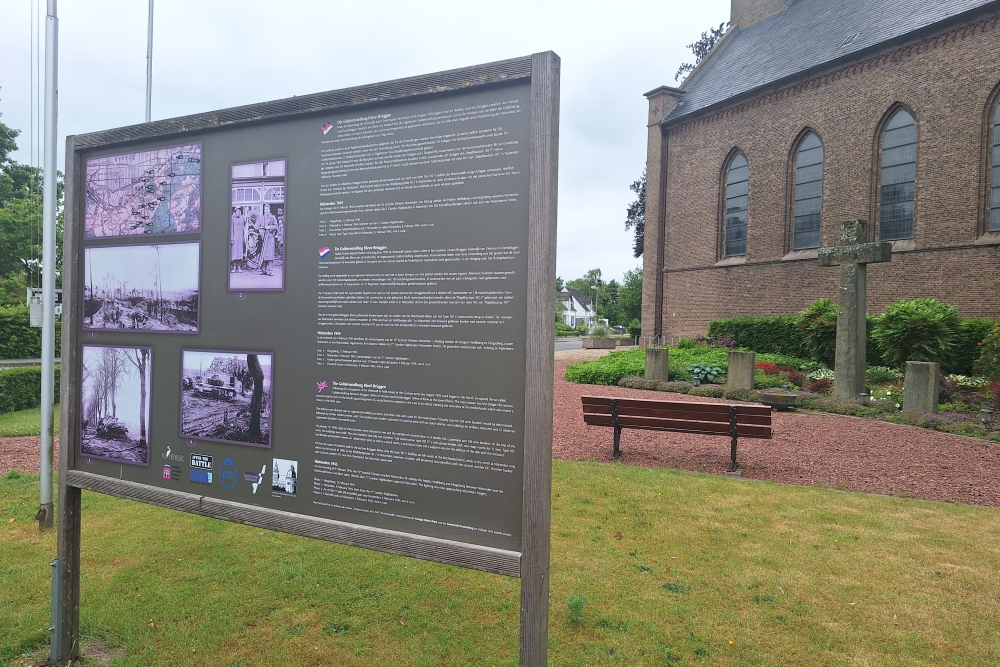Historical screen September 1944: Nutterden
The Geldernstelling Kleve-Brüggen
The Geldernstellung was a German defence line that began to be constructed in late August 1939, when Germany had occupied the Westwall. This line ran from Brüggen (west of Viersen) to Donsbrüggen (west of Kleve, near the Dutch border). The line was intended to protect the area from a possible attack via the Netherlands, should that country lose its neutrality. It was feared that such an attack would pose a threat to the Ruhr area, the industrial heart of Germany.
Construction of the line:
Divided into six regimental construction sections.
Total planned:
250 crew bunkers
150 machine gun bunkers
25 constructions for loopholes
Buildings for artillery observers (22) and combat posts (22)
In practice, the number of constructions is considerably limited.
On 19 January 1940, the construction freeze was determined at:
6 double MG casemates
38 crew bunkers
In the end, only 142 constructions were built.
Types that were built:
Regelbau 102 V: crew accommodation for 15 men, double
Regelbautyp 107: combat post with two MGs
A few of these bunkers have been preserved, including in Wolfsbergstraße 7 in Nütterden (tactical number 621) and at the village church (tactical number 617).
Nütterden 1945
On 9 February 1945, the 15th Scottish Division captured Nütterden during their advance east. That afternoon, the Wolfsberg (Hingstberg) was also captured. Later that day, the 2nd Gordon Highlanders entered the village. The fighting then moved towards Materborn.
Photos on the screen:
Hingstberg, 12 February 1945
2nd Gordon Highlanders in Nütterden, 9 February 1945
Archer tank near Nütterden, 9 February 1945
Churchill tank in Nütterden, 9 February 1945
Do you have more information about this location? Inform us!
Source
- Text: RJArmy.nl
- Photos: RJArmy.nl
Nearby
Museum
Point of interest
- Information Sign Bombing 07-02-1945 Kleve - Kleve (Donsbrüggen)
- Location Knickebein Radar Kleve - Kleve
- Historical Panel September 1944: Kranenburg - Kranenburg
Monument
- War Memorial Nütterden - Nütterden
- Liberation Route Marker 091: Imprisoned slave labourers killed during bombing - Kleve (Donsbrüggen)
- Memorial Victims Eastern Front German War Cemetery Donsbrüggen - Kleve (Donsbrüggen)
Cemetery
- German War Cemetery Kleve-Dönsbrügger Heide - Kleve (Donsbrüggen)
- German War Graves Kleve - Kleve
- German War Grave Kranenburg - Kranenburg
Remembrance Stone
- Stumbling Stones Brabanterstrase 24 - Kleve
- Stumbling stones Römerstrasse 28 - Kleve
- Tumblingstones Hagsche Strasse 77 - Kleve
Fortification
- Schuilbunker Type 102v - Nutterden
- Fort Pannerden - S3a - Casemate 1 - Doornenburg
- Fort Pannerden - Szw Fr - Casemate 2 - Doornenburg







